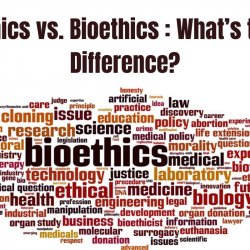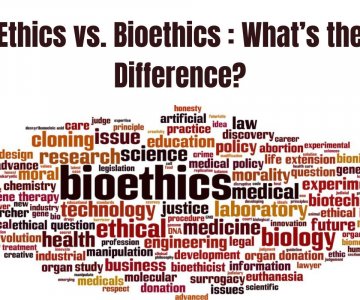What is Soft Robotics? Examples, Research and Applications

 Introduction
Introduction
- Introduction:
Welcome to the world of robotics! You may have heard about traditional robotics technologies and their applications in various industries. But have you ever wondered about the emerging field of soft robotics? In this section, we will explore the concept of soft robotics, how it differs from traditional robotics, and some exciting examples of this technology in action.
- Definition of Soft Robotics:
Soft Robotics is a rapidly growing field that combines principles from engineering, biology, and computer science to develop robots made up of soft and flexible materials. Unlike traditional robots that are rigid, with metal or plastic parts, soft robots are designed to mimic natural movements and interactions. This flexibility allows them to navigate through complex environments with ease.
The key characteristic of soft robotics is its use of “soft” materials such as silicone, rubber, fabric, or gel-like substances instead of hard materials. These materials give rise to soft robots’ ability to change shape and deform without damaging themselves or their surroundings. As a result, soft robots can interact safely with humans and delicate objects without causing harm.
- Examples of Soft Robots:
Soft robotic technology has already made significant strides in various fields such as healthcare, manufacturing, space exploration, and more. One notable example is the creation of inflatable robotic arms used for minimally invasive surgeries. These soft robots can enter the body through small incisions and maneuver around organs more easily than traditional surgical tools.
Another remarkable application is the development of manta ray inspired underwater drones that use soft fanlike structures for propulsion. These robots can move swiftly through water without disturbing marine life or causing damage to delicate coral reefs.
Definition of Soft Robotics
Welcome to the fascinating world of robotics, where technology continues to push the boundaries of what was once deemed impossible. In recent years, a new type of robotics has emerged, known as “soft robotics”. While traditional robotics focuses on creating rigid and precise machines, soft robotics takes a different approach by utilizing flexible and compliant materials to achieve movement and control. In this blog section, we will explore the definition of soft robotics and its unique characteristics that set it apart from traditional robotics.
So, what exactly is soft robotics? At its core, soft robotics is a subfield of robotics that involves the design, development and application of robots with flexible or deformable parts. These robots are made up of soft materials such as elastomers, polymers, gels or even fabric. Unlike traditional robots which are limited by their rigid structures and joints, soft robots are able to adapt to their environment and interact with it in a more natural way.
One of the most striking characteristics of soft robotics is its ability to mimic nature. Soft robots take inspiration from biological systems such as octopuses, worms and caterpillars which have evolved to move effortlessly through complex environments. For example, an octopus has long been admired for its dexterity and flexibility in maneuvering through tight spaces underwater. By replicating the movements and structures found in nature, soft robots are able to perform tasks that were previously challenging for traditional robots.
Principles and Advantages of Soft Robotics
- Compliance and Flexibility: Soft robots are made from highly compliant materials that can deform and adapt to their surroundings, enabling them to navigate complex and dynamic environments more effectively than rigid robots. Their inherent flexibility allows for safer interactions with humans and delicate objects, making them suitable for a wide range of applications, including healthcare, manufacturing, and exploration.
- Safe Human-Robot Interaction: Soft robots are inherently safer for human-robot interaction compared to their rigid counterparts. Their soft and deformable structures reduce the risk of injury, making them well-suited for applications such as medical assistance, rehabilitation, and collaborative tasks in shared workspaces.
- Adaptability and Versatility: Soft robots can adapt to various environments and tasks due to their deformable and versatile structures. They can squeeze through tight spaces, conform to irregular surfaces, and handle objects of different shapes and sizes, making them ideal for applications in exploration, inspection, and manipulation tasks in challenging or confined spaces.
- Bioinspired Design and Locomotion: Soft robotics often draws inspiration from biological systems, mimicking the locomotion and behavior of natural organisms. By emulating the unique characteristics of living organisms, soft robots can achieve more efficient and agile movement, allowing them to navigate diverse terrains and perform specific tasks that would be challenging for traditional rigid robots.
- Gentle Handling of Delicate Objects: Soft robotic grippers and manipulators can handle delicate and fragile objects without causing damage, thanks to their compliant and adaptive structures. This feature is particularly advantageous in industries such as food handling, agriculture, and manufacturing, where precise and gentle manipulation of sensitive materials is essential.
- Reduced Weight and Cost-Effective Manufacturing: Soft robots often have simpler designs and lighter weight compared to traditional rigid robots. This characteristic contributes to reduced production costs and easier deployment, making soft robotics more accessible and cost-effective for various applications, including research, education, and commercial use.
- Enhanced Locomotion in Challenging Environments: Soft robots can navigate and operate in complex and challenging environments, including confined spaces, rough terrains, and underwater conditions, where traditional rigid robots may face difficulties or limitations. Their ability to deform and adjust to their surroundings enables them to perform tasks in environments that are inaccessible or hazardous for conventional robots.
Examples of Soft Robotics Applications
- Medical Devices and Wearable Robotics: Soft robotic devices are being developed for various medical applications such as rehabilitation, prosthetics, and exoskeletons. They can conform to the body’s shape and movement, making them more comfortable and less intrusive compared to traditional rigid devices.
- Assistive and Service Robots: Soft robots can be used as assistive devices for the elderly and people with disabilities, providing support with activities of daily living. They can also be utilized in service industries, such as hospitality and customer service, where their soft and safe interactions are advantageous.
- Search and Rescue Operations: Soft robots are being developed for search and rescue missions in disaster-stricken areas where traditional rigid robots may not be effective. These robots can navigate through complex terrains, squeeze through tight spaces, and manipulate objects without causing damage.
- Exploration and Inspection in Hazardous Environments: Soft robotics are suitable for exploring and inspecting hazardous environments such as nuclear reactors, pipelines, and underwater structures. Their ability to withstand harsh conditions and adapt to various surfaces makes them ideal for these tasks.
- Grippers and Manipulators for Delicate Objects: Soft robotic grippers and manipulators are designed to handle delicate and fragile objects without causing damage. They can adjust their grip and pressure to handle objects of various shapes and sizes, making them valuable in industries like food processing and manufacturing.
- Bioinspired Robotics: Researchers are creating soft robots inspired by various living organisms, such as octopuses, worms, and caterpillars. These robots mimic the locomotion and behavior of their biological counterparts, enabling them to navigate diverse environments and perform specific tasks more effectively.
- Human-Robot Interaction and Collaboration: Soft robots are being developed to work alongside humans in collaborative settings, promoting safe and natural interactions. They can assist with tasks that require close human-robot collaboration, such as assembly, manufacturing, and rehabilitation exercises.
- Educational and Research Tools: Soft robots are used as educational tools in schools and universities to teach students about robotics, materials science, and biomechanics. They also serve as research platforms for studying principles of soft robotics, including material properties, locomotion, and control algorithms.
Current Research in Soft Robotics
- Material Science and Engineering: Research continues to focus on developing novel soft materials with customizable properties, such as flexibility, durability, and self-healing capabilities. Scientists are exploring various materials, including elastomers, hydrogels, and shape-memory polymers, to create advanced soft robotic structures with enhanced performance and functionality.
- Actuation and Control Mechanisms: Researchers are working on innovative actuation and control mechanisms that enable precise and efficient motion and manipulation in soft robots. This includes the development of new soft actuators, such as pneumatic artificial muscles, dielectric elastomer actuators, and shape-changing materials, as well as the integration of advanced control algorithms for improved adaptability and autonomy.
- Sensing and Feedback Systems: Efforts are being made to integrate advanced sensing technologies into soft robotic systems to enhance their perception and interaction capabilities. Research in this area involves the exploration of soft and stretchable sensors, as well as the development of feedback systems that enable real-time monitoring and adjustment of robotic behaviors in response to environmental changes.
- Bioinspired Design and Locomotion: Researchers are studying biological systems to derive inspiration for the design and locomotion of soft robots. By mimicking the unique features and movement patterns of natural organisms, scientists aim to improve the agility, efficiency, and adaptability of soft robotic systems, particularly in challenging environments and complex tasks.
- Soft Robotics in Medicine and Healthcare: There is ongoing research in the application of soft robotics for medical purposes, including surgical assistance, rehabilitation, and prosthetics. Scientists are exploring the development of soft robotic devices that can interact safely with the human body, providing assistance and support for various medical procedures and therapies.
- Soft Robotics in Industrial and Manufacturing Settings: Research is being conducted to explore the integration of soft robotic systems in industrial and manufacturing processes. This includes the development of soft grippers and manipulators that can handle delicate materials and perform intricate tasks with high precision, as well as the implementation of soft robotic automation solutions to improve efficiency and flexibility in manufacturing operations.
- Integration of Soft Robotics with AI and Machine Learning: Researchers are investigating the integration of soft robotics with advanced artificial intelligence (AI) and machine learning techniques to enhance the autonomy and adaptability of robotic systems. This includes the development of intelligent control algorithms that enable soft robots to learn from their environment and make informed decisions to optimize their performance and behavior.
Challenges and Future Directions for Soft Robotics
- Material Development: Developing soft and robust materials with desirable properties, such as flexibility, durability, and responsiveness, remains a significant challenge. Future research may focus on the development of new materials and composites that offer enhanced performance and versatility for soft robotic applications.
- Actuation and Control: Achieving precise and efficient actuation and control in soft robots is challenging, particularly in complex and dynamic environments. Future directions may involve the development of advanced actuators and control algorithms that enable precise manipulation and locomotion in various tasks and environments.
- Sensing and Feedback: Integrating reliable and adaptable sensing and feedback systems in soft robots is crucial for enhancing their autonomy and interaction capabilities. Future research may focus on the integration of advanced sensor technologies and feedback mechanisms to improve the robots’ perception and response to their environment.
- Power and Energy Efficiency: Soft robots often require efficient power sources and energy management systems to operate effectively for extended periods. Future directions may involve the development of energy-efficient actuators, power systems, and energy-harvesting techniques to enhance the autonomy and endurance of soft robots.
- Robustness and Durability: Ensuring the robustness and durability of soft robotic systems, especially in demanding and unpredictable environments, remains a significant challenge. Future research may focus on enhancing the resilience and self-healing capabilities of soft materials and components to improve the overall robustness and longevity of soft robotic systems.
- Scalability and Manufacturability: Scaling up the production and manufacturing of soft robotic systems for practical applications is challenging due to the complexity and variability of soft materials and designs. Future directions may involve the development of scalable and cost-effective manufacturing techniques, such as advanced 3D printing and soft lithography, to facilitate the mass production of soft robotic devices.
- Integration with AI and Machine Learning: Integrating soft robotics with advanced artificial intelligence (AI) and machine learning algorithms can significantly enhance their autonomy, adaptability, and decision-making capabilities. Future research may focus on developing intelligent control and learning algorithms that enable soft robots to learn and adapt to new tasks and environments more effectively.
Ethical Considerations in the Development of Soft Robotics Technology
Soft robotics is an emerging field that focuses on creating robots with flexible and deformable structures. These robots are designed to interact with their environment in a safe and gentle manner, mimicking movements similar to living organisms. This innovative technology has opened up a whole new realm of possibilities in various industries such as healthcare, manufacturing, and exploration.
As exciting as this may sound, the development of soft robotics technology also raises ethical considerations that need to be carefully addressed. In this blog post, we will delve into these considerations and their impact on the future of soft robotics.
One major ethical concern in the development of soft robotics is the potential for these machines to replace human workers. With their ability to perform delicate tasks in hazardous environments without risking human lives, companies might be tempted to replace human labor with soft robots. This could lead to job displacement and economic implications for workers.
Another consideration is the autonomy and decision making capabilities of soft robots. As these machines become more advanced, there is a possibility that they may develop their own consciousness or decision making abilities. This raises questions about who would be held accountable if a soft robot causes harm or injury while carrying out its programmed task.
You can also read:
innomatics data science reviews
innomatics data science course reviews
besant technologies data science
besant technologies data science reviews
besant technologies placement news






Ingen kommentarer endnu